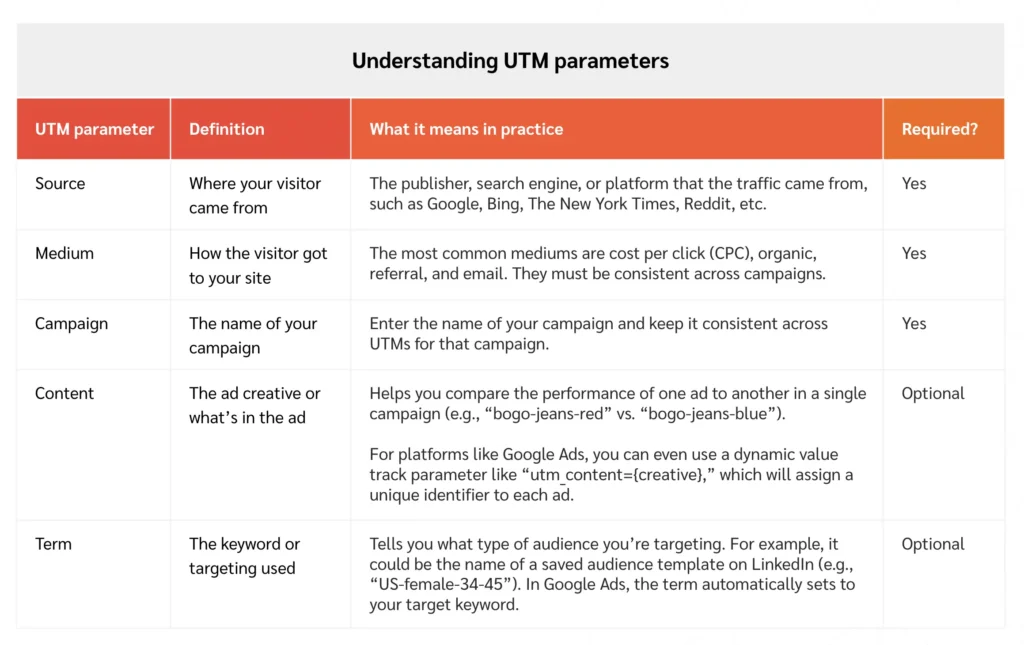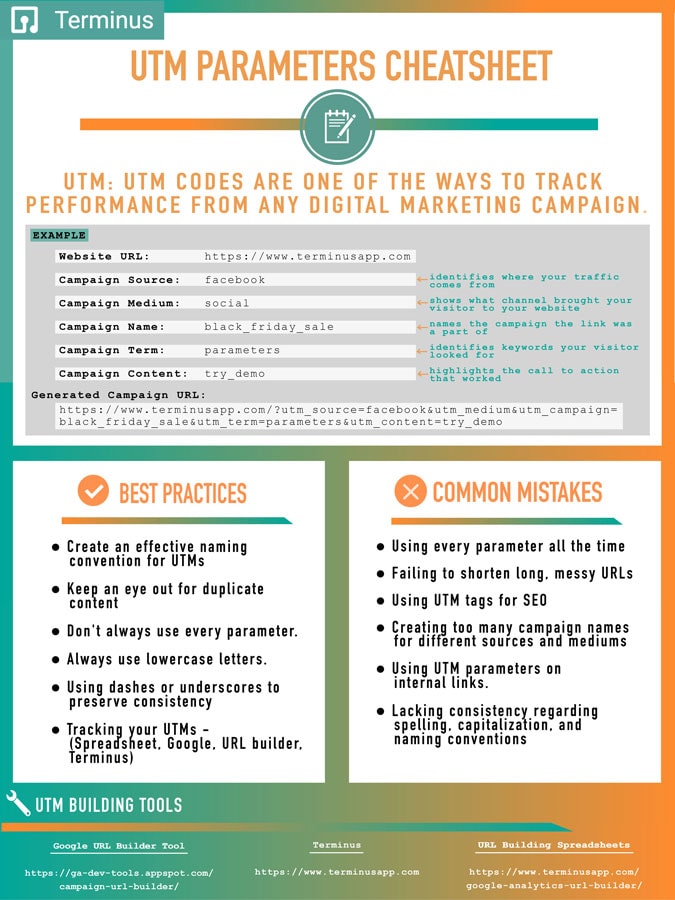Common Mistakes to Avoid When Using UTM Parameters
UTM (Urchin Tracking Module) parameters are essential for tracking the effectiveness of digital marketing campaigns, but misusing them can lead to inaccurate data and missed insights. Here are the most common mistakes and how to avoid them:
Inconsistent Naming, Spelling, and Capitalization
- Inconsistent naming conventions for campaigns, sources, and mediums make it difficult to aggregate and compare data accurately.
- Mixed capitalization (e.g., “Facebook” vs. “facebook”) and spelling variations (e.g., “newsletter” vs. “NewsLetter”) can fragment your analytics, as UTM parameters are case-sensitive.
- Best Practice: Establish and enforce a standardized naming convention across your team, and use lowercase letters for consistency.
Mixing Up Source and Medium Parameters
- Confusing source and medium is a frequent error. The source indicates where the traffic comes from (e.g., “facebook”), while the medium describes how it arrived (e.g., “social” or “cpc”).
- Example Mistake: Tagging a Facebook ad with
utm_source=facebook&utm_medium=facebookinstead ofutm_source=facebook&utm_medium=cpc. - Best Practice: Always define source as the platform and medium as the channel type (e.g., “email”, “social”, “cpc”).
Not Using Campaign Parameters Effectively
- Omitting the campaign parameter or using vague, unclear names (e.g., “campaign1”) reduces the usefulness of your data.
- Using different campaign names for the same initiative across channels prevents accurate cross-channel comparison.
- Best Practice: Use descriptive, consistent campaign names and apply them uniformly across all channels for the same campaign.
Overcomplicating or Using Too Many Parameters
- Adding unnecessary or redundant parameters can clutter your data and obscure meaningful insights.
- Best Practice: Focus on the essential parameters (source, medium, campaign) and only add content or term if they provide actionable data.
Syntax Errors in URL Construction
- Missing equals signs, question marks, or using incorrect separators (e.g., “+” instead of “&”) can break tracking and cause URL duplication in analytics.
- Using spaces in parameter values converts them to “%20”, leading to inconsistencies; use dashes or underscores instead.
- Best Practice: Use a UTM builder tool to avoid syntax mistakes and test all links before launching campaigns.
Using UTMs on Internal Links
- Tagging internal links with UTMs creates new sessions in analytics, disrupting attribution and inflating traffic sources.
- Best Practice: Only use UTMs for external campaign links, not for navigation within your own site.
Not Using UTMs at All
- Failing to implement UTM tracking means missing out on valuable insights into which campaigns and channels drive results.
- Best Practice: Consistently apply UTMs to all relevant external marketing links.
Neglecting Regular Audits and Cleanup
- Not auditing UTM links can leave outdated or incorrect tags in circulation, polluting your data.
- Best Practice: Audit your UTM parameters regularly—at least quarterly—and clean up old or irrelevant tags.
Including Personally Identifiable Information (PII)
- Adding sensitive data (e.g., email addresses, names) to UTM parameters violates privacy best practices and may breach regulations.
- Best Practice: Never include PII in your UTM tags.
Summary Table: Common UTM Mistakes and Fixes
| Mistake | Consequence | How to Fix |
|---|---|---|
| Inconsistent naming/capitalization | Fragmented, unreliable data | Standardize and enforce naming conventions |
| Confusing source & medium | Misattributed traffic | Source = platform, medium = channel type |
| Vague or missing campaign names | Unclear campaign performance | Use descriptive, consistent campaign names |
| Overcomplicating parameters | Cluttered, confusing data | Use only essential parameters |
| Syntax errors in URLs | Broken tracking, duplicates | Use a UTM builder, test links |
| Using UTMs on internal links | Inflated, inaccurate sessions | Only tag external campaign links |
| Not using UTMs | No campaign insights | Tag all relevant external links |
| Not auditing UTMs | Outdated, incorrect data | Audit and clean up regularly |
| Including PII in UTMs | Privacy risks, compliance issues | Never include sensitive data |
By avoiding these common mistakes and following best practices, you can ensure your UTM parameters deliver accurate, actionable data for your marketing campaigns.





